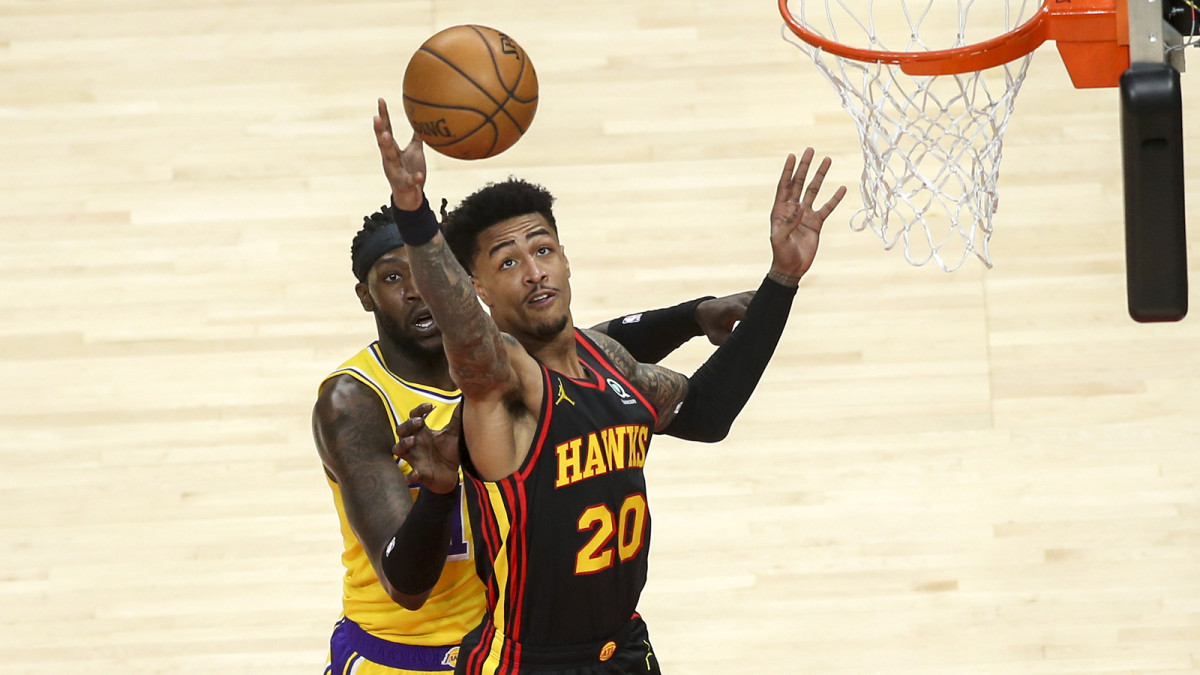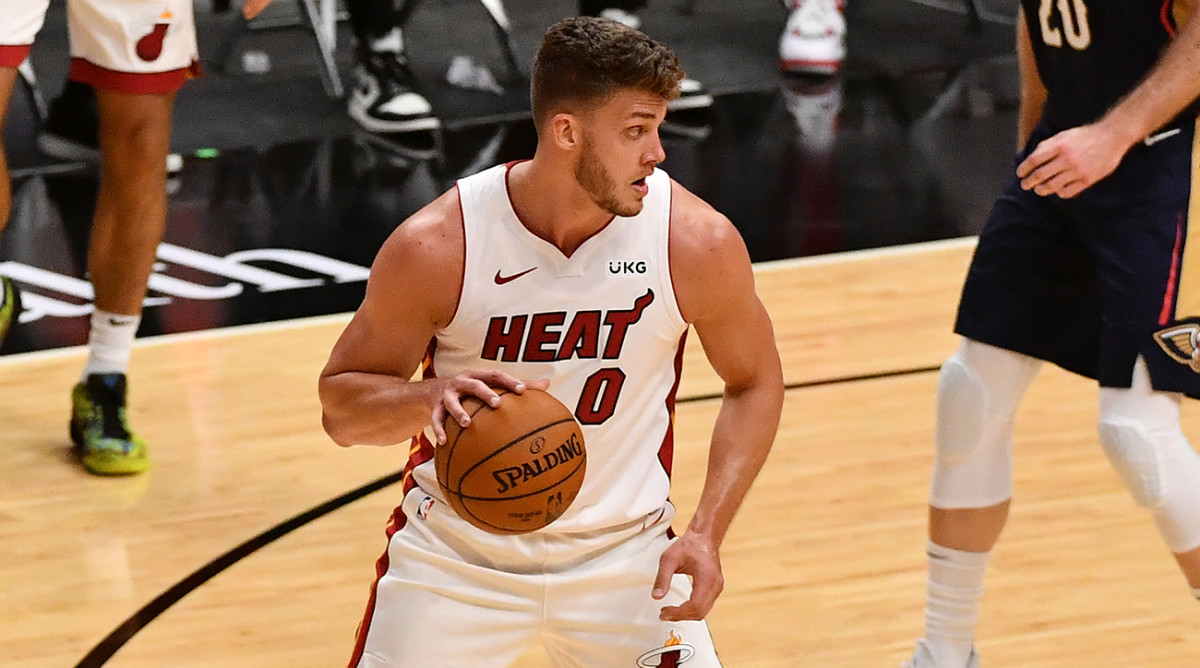What's At Stake for the Hawks?

Welcome to the Morning Shootaround, where every weekday you’ll get a fresh, topical column from one of SI.com’s NBA writers: Howard Beck on Mondays, Chris Mannix on Tuesdays, Michael Pina on Wednesdays, Chris Herring on Thursdays and Rohan Nadkarni on Fridays.
No team had a more interesting offseason than the Hawks, whose pricey acquisitions instantly took them from being a young, cute rebuilding club with upside to one with real playoff expectations.
That accelerated benchmark, which almost certainly played a role in coach Lloyd Pierce’s firing last week, is still within reach. But with things trending in a positive direction—the injuries healing, the softer schedule in the second half and the new voice in the head coach’s seat—the Hawks are out of scapegoats.
So what should we expect from them when they resume play Thursday? And what’s at stake—or, more precisely, who’s at risk—if Atlanta ultimately falls short in its bid for a postseason berth?
Based on how things were going in the aftermath of Pierce’s dismissal, the Hawks may have been disappointed to have the All-Star break when they did. They’d just won back-to-back games for the first time in almost a month and a half, which also marked the first time since early January that offseason acquisition Bogdan Bogdanović (fractured kneecap) had seen game action.
Having Bogdanović, a nifty player who can comfortably serve as a primary ballhandler, is huge for the Hawks. It’s not just because the Hawks desperately need a lead-scoring threat from its bench—Atlanta’s offense has been 13.7 points worse per 100 possessions with Trae Young off the floor—but also because having him will present a good opportunity for Young to play off the ball more.
Beyond Bogdanović, Rondo had been back for about a week and a half from a knee injury when the break hit, while Danilo Gallinari, who’s struggled mightily since returning from a nine-game absence in mid-January, will get an opportunity to get back on track. Kris Dunn, who’s missed the entire season, is on schedule to return at the end of the month. But Atlanta will most readily welcome the return of wing De’Andre Hunter (right-knee surgery), whose injury coincided with a seven-losses-in-eight-games spell.
(Hunter’s rehab process has intensified, and the Hawks say they’ll give an update on him on March 19.)
As the team’s best two-way wing, Hunter’s absence has been felt acutely. Atlanta began the season 10-9, but then lost seven of its first eight games without Hunter available. Aside from Cam Reddish, who’s far less consistent than Hunter, the club lacks capable defenders on the perimeter — something that’s made it difficult for them to hold the rope in tight games. Atlanta hemorrhages 123.3 points per 100 possessions in the clutch—second-worst in the NBA—when scores are within five points in the game’s last five minutes. Atlanta’s lost seven games after leading through three quarters, also the league’s second-highest total, per Stats Perform. They’re sandwiched between Minnesota and Detroit, who own the NBA’s worst records.

Yet for all the players the Hawks will get back, their biggest boost may come from one they send away.
Unable to reach a contract extension with fourth-year power forward John Collins—they reportedly offered a $90 million deal that he turned down before the season opened—Atlanta now has to decide whether it wants to deal him elsewhere ahead of his restricted free agency this summer. If the Hawks keep him, there’s a good chance they’ll be forced either to match a max offer elsewhere or let him walk after he agrees to a max deal with another team in a relatively dry 2021 free-agent market.
Collins is an immensely talented stretch four, hitting nearly 40% of his 276 three-point tries the past two seasons, up from 34.6% his first two seasons in the league. But as someone who doesn’t defend well on a club that scores far more easily than it gets stops, the 23-year-old may be a luxury. And if the Hawks can identify and swing a deal for someone with more balance—especially around a gifted, yet highly imperfect star like Young—it may make more sense than keeping Collins at max or near-max money.
No matter what direction the team opts to take with Collins, there’s reason for optimism in Atlanta. For any talk of underachieving—16–20, and 11th place in the East after inking more than $200 million worth of offseason deals—the Hawks finished with a net rating that narrowly broke even, a suggestion that their performance was closer to that of a .500 team, despite all the injuries they sustained. Their schedule is among the NBA’s 10 easiest in the second half, less challenging than what they had in the first half.
And none of this even touches on the fact that they just handed their coaching job to Nate McMillan, perhaps the league’s biggest overachiever the past four years. From 2016-17 to 2019-20, McMillan’s injury riddled Pacers—missing Victor Oladipo, Domantas Sabonis and Malcolm Brogdon for stretches—won 32 more games than FiveThirtyEight’s model pegged them for in preseason. In each of those years, Indiana finished at least five games better than FiveThirtyEight projected to begin the season. (The playoffs, where his teams have sputtered against versatile defenses, are obviously a different story.)
While McMillan developed something of a laissez-faire reputation on offense, encouraging quick, open midrange jumpers in Indiana if and when they were available, his clubs found great success on defense by funneling action toward the rim. With better game-planning and execution, Atlanta could improve using a more controlled version of that style with Clint Capela, who’s been a Godsend as a backstop. Capela’s held opponents to 49.1% shooting within six feet of the rim, 11.6 percentage points beneath their averages, an incredible figure given who he’s on the floor with from night to night.
If there’s some irony at play here, it’s that the Hawks not too long ago stood as one of the league’s most consistent clubs, with postseason appearances in a conference-best 10 consecutive years. But the result was generally the same: Nine first- or second-round exits, with one trip to the conference finals that ended in a sweep. The reality of being turned back constantly prompted the club to hit the reset button in 2017, deciding it was better to bottom out to land a star through the draft than continue to scratch and claw as is.
Now, what was once a given is the new threshold for success; with everyone needing that next step to justify themselves. McMillan needs it to stay in the mix for the job at year’s end. The free-agent signees needing it—and, in some cases, better performances, too—to potentially avoid being shipped elsewhere this summer. General manager Travis Schlenk needing it to show the Pierce firing was right, and to justify the offseason spending. And even Young, to show he’s capable of leading the club as a franchise player.
There’s no clarity in terms of how it’ll end up. But there’s no doubt it’ll be fascinating to watch.
Addressing Meyers Leonard

Back when the NBA’s Orlando bubble opened, there was plenty of conversation around the notion of kneeling during the national anthem—an act that had once been seen as controversial, but now, in the wake of George Floyd, had become universally embraced.
Still, Heat center Meyers Leonard chose to stand, which garnered its own share of attention.
“I haven’t slept. I’m a zombie right now. It’s been difficult because the truth of the matter is, I have a loving heart,” he told Marc Spears after his decision. “Very compassionate, and I’m very aware of what is happening in America today and what has been going on for many years.”
Which is largely why now, in the aftermath of video of Leonard aggressively using an anti-Semitic slur during a video-game stream, is both disappointing and not terribly surprising. Because the issue he made out to be so layered back in August was never all that complicated to begin with.
With many things in life, there’s nothing wrong with the idea of declining to conform. But with something like the anthem—which Black athletes were using to get across the message of societal injustice as it relates to police killings—there was no downside to kneeling in solidarity with teammates and a league that is largely Black; particularly after George Floyd’s death.
Leonard’s message about the military and its place in his heart because of his brother’s service was fine. But it also wasn’t in any way at odds with what his teammates were trying to get across. After all, countless Black players have family members who have served, too. And Colin Kaepernick got his advice on how to most respectfully demonstrate from Nate Boyer, a Green Beret.
None of us can truly know what was in Leonard’s heart then, or what was in his heart earlier this week, when he uttered the slur. But one thing is clear: You lose the moral high ground and your right to be taken seriously as a deep thinker on issues like these when you do what he has.
